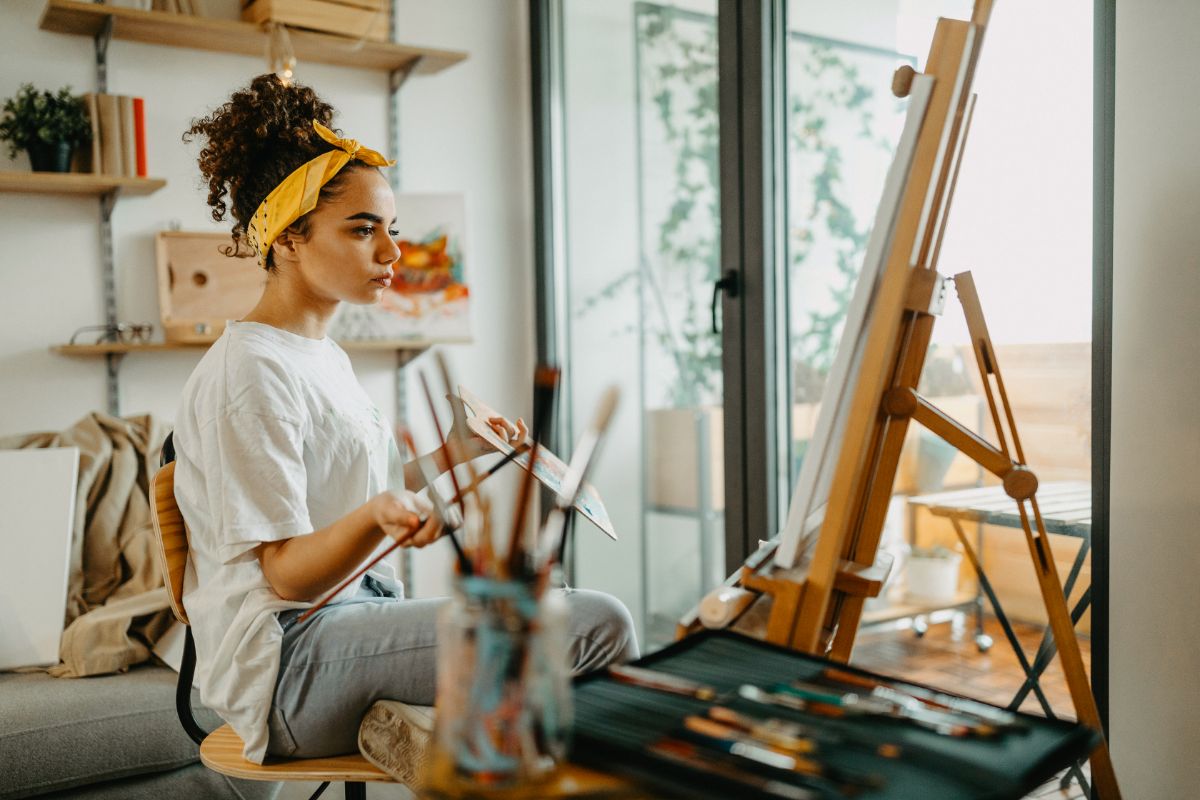
How To Write An Artist Statement
Of course, whenever you create a piece of art, you hope that those that see the art will be able to understand and appreciate it.
Artists can easily talk to people that are seeing their art and help to field questions that they may have about the pieces, but what can an artist do when they cannot speak to everyone that sees their art?
This is where artists’ statements come into play.
Artists’ statements are a way for an artist to directly explain their work via text so that anyone viewing the art, for example in a gallery, or while the artist is away, can still understand the piece.
However, writing an artist statement is no simple task, and it can be very difficult if you don’t know what you are doing.
Do you need to write an artist statement yourself? Not sure where to start? If so, you’ve come to the right place. Read on below, because we are going to show you how to craft the perfect artist statement!
How To Write An Artist Statement
Get Brainstorming
It can be a daunting prospect to try to summarize your work in just a few words.
How can you possibly begin to narrow down such a massive part of your life into just a few understandable words? This is why brainstorming is an important first step.
Before you can actually begin writing about your work, you’re going to want to spend a bit of time thinking about your work.
Sit and look at your work for a few minutes, with a pen and some paper close to hand.
As you look at your work, make note of words that pop into your mind as you look at it. What kinds of adjectives would you use to describe your work?
Use whatever kind of descriptors you can, and look for the ones that communicate the richest sense of the piece.
You will generally want to avoid using jargon words, as you will need to ensure that anyone that reads the statement will be able to understand it!
As you are brainstorming all of the words associated with your work, try to think about what emotions you want your audience to feel, and what you want them to take away from the piece after they have looked at it.
This will help you to hone in on the perfect descriptors for your piece!
Of course, you don’t want to be too on-the-nose with your statement, so make sure you leave some room for interpretation for the reader so that they can get their own experience of the piece!
Ask Yourself Questions

There are two very important questions that you are going to want to ask yourself when putting your work into words. First, you are going to want to ask yourself “Why” you made your piece.
Take a look inside your mind to try to see why it is that you put your piece together, and what you were trying to communicate when putting it together.
Why did you feel that the work needed to be made? Don’t worry if you are having trouble answering these questions.
They can seem quite daunting at first, but you do not need to have a definitive and concrete answer right away!
You will also want to ask yourself “What” your piece is. This is luckily a much easier question to answer, as at this point you are just describing what your piece is on a basic level.
Is it a painting? A Sculpture? Or maybe even a series of photographs? It is crucial to explain this in your statement, as it can help to get your viewers into the right mindset to experience your piece.
You might also want to ask yourself “How” you put a piece together.
If your piece is particularly unique in terms of how it’s made, and you feel that understanding the production process is key to understanding the piece, then make sure to mention it in your statement.
This will help to give your viewers a much richer sense of your piece, and will help them to better understand your intent with it!
Make sure to also think about all of the other questions that people might ask you about your piece.
There may be all manner of unique questions that people may ask you based on what your piece is, and what is unique about it, so make sure to really think about what people may ask.
It may help to think back to questions people have asked you in the past as you were still putting the piece together!
What Should You Avoid In An Artist Statement?
Cliches
Generally, you will want to avoid using cliches in your artist statement, as they can very easily cheapen the experience of your piece.
After all, your piece is unique to you, so you want words that express that uniqueness, right?
Theory
Art theory is great for helping you to understand art, but you will want to avoid applying it in your statement just to sound smart!
Remember that your statement is intended for everyone to read, thus you want to be sure that as many people as possible will understand it!
Weak Phrases
If you feel like any phrases in your artist statement are particularly weak, or don’t quite elicit the emotions you want, then be sure to strike them outright!
To Wrap Up
As you can see, putting together an artist statement can be quite a difficult task, especially if you are totally new to the task.
However, easily the hardest part of producing an artist statement is taking the first steps toward doing it.
We hope that this guide has helped you to feel more confident in getting started on tackling your artist statement!
Just make sure to follow the steps we illustrated above, and you’ll be sure to create a perfect statement in no time at all!
Sell More Art Online
If we can't teach you, no one can!


